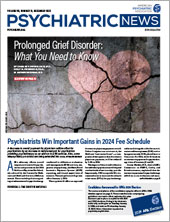While there are signs that public attitudes regarding mental illness are improving, many still react negatively to people with serious mental illness (SMI). So noted Phillip Yanos, Ph.D., during a session at the Mental Health Services Conference on the use of brief video interventions to reduce stigma.
“Core attitudes that people with SMI are violent, unproductive, and unpredictable persist globally,” said Yanos, a clinical psychologist and professor at the John Jay College of Criminal Justice in New York. Such attitudes contribute to internalized shame and can keep people from seeking treatment for their illness, he noted during his presentation.
There are a variety of ways to educate people about SMI. In today’s attention-starved digital age, time is of the essence. A project led by researchers at Columbia University is attempting to shift public attitudes about SMI with 90-second videos about people living with schizophrenia. Columbia researchers Doron Amsalem, M.D., an assistant professor of clinical psychiatry, and Lisa Dixon, M.D., a professor of psychiatry, spoke of the evolution of their project during the Mental Health Services Conference. Dixon is also the director of OnTrackNY, a first-episode psychosis treatment program associated with Columbia.
The first 90-second video created by the researchers was derived from an existing 11-minute video of a young woman with schizophrenia discussing her psychotic episode and the challenges of living with this illness. Amsalem and colleagues edited the video to 90 seconds and emphasized messages of hope and recovery; in the shortened video, the woman describes how she copes with her psychosis symptoms and tries to lead a meaningful and productive life.
In the initial proof-of-concept study, which was
published in
The American Journal of Psychiatry in 2021, Amsalem and colleagues assigned a group of about 1,000 young adults (aged 18 to 30) to watch that 90-second video, read a written transcript of the narrative, or complete neither activity (non-intervention control).
The viewers then filled out web-based surveys related to public stigma immediately after watching the video and 30 days later. The surveys had questions within five stigma domains:
•
Social distance (for example, would you be friends with someone with schizophrenia?)
•
Social restriction (for example, should a person with schizophrenia marry and have children?)
•
Separateness (for example, how different are people with schizophrenia from other people?)
•
Stereotyping (for example, can someone with schizophrenia manage their own finances?)
•
Perceived recovery (for example, can a person with schizophrenia follow through on a treatment plan?)
At both time points, participants who watched the videos reported significantly lower scores across stigma domains compared with the control group. Participants who read the narrative also had lower rates of stigma than the control group, though not as pronounced as among the video group.
Amsalem and colleagues wondered if the videos might be even more effective if the speaker in the videos was of the same gender and/or race as the viewer. As a
follow-up to the 2021 study, he and colleagues developed four additional brief videos where the speaker describing the lived experience of schizophrenia was a Black male, Black female, White male, and White female.
The researchers randomly assigned about 2,000 young adults to watch one of the four videos or a control group. Amsalem noted that all four videos were again effective at reducing stigma, but they were not any more effective if the speaker and viewer were matched in race and/or gender.
Amsalem’s team made another video with a young woman who spoke about specific
gender experiences—for example, “It’s hard to live as a woman with schizophrenia.” In this instance, the researchers found that viewers who were women experienced a greater reduction in stigma after watching the tailored video than a video that did not reference gender, notably in domains related to schizophrenia stereotypes and separateness.
Many Families Also Need Education
For many people living with schizophrenia, the burden and shame felt by their family members and friends can be more troubling than negative attitudes from the broader public, said Dixon.
“There are some existing family interventions for psychosis, but they often focus on parents,” said Dixon, who noted that she herself is a sibling of someone with psychosis. “There is less attention paid to younger family members or friends who may play a role in patient care.”
Dixon described a study that evaluated the impact of a brief video on the feelings of people who had a connection to someone with schizophrenia. In the video, the speaker describes the supportive role of family and friends in living with psychosis. As with previous studies, the researchers found that these videos were effective at reducing stigma felt toward people with schizophrenia.
Dixon said these videos could be very promising but cautioned that “these are thoughts; we are not yet measuring actions. We have a lot more to do in this space.”
Amsalem told the audience that the Columbia team is currently showing some of these videos in social media realms such as Instagram. They are not assessing stigma directly, but are examining engagement with the videos—shares, likes, and clicking on resource links—to see if these videos are producing positive effects. ■

